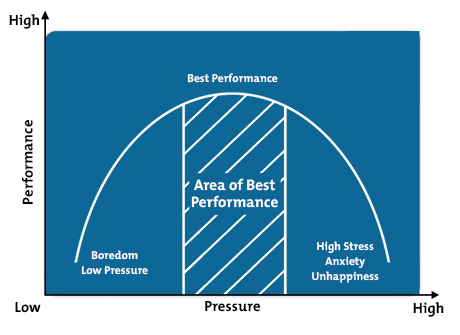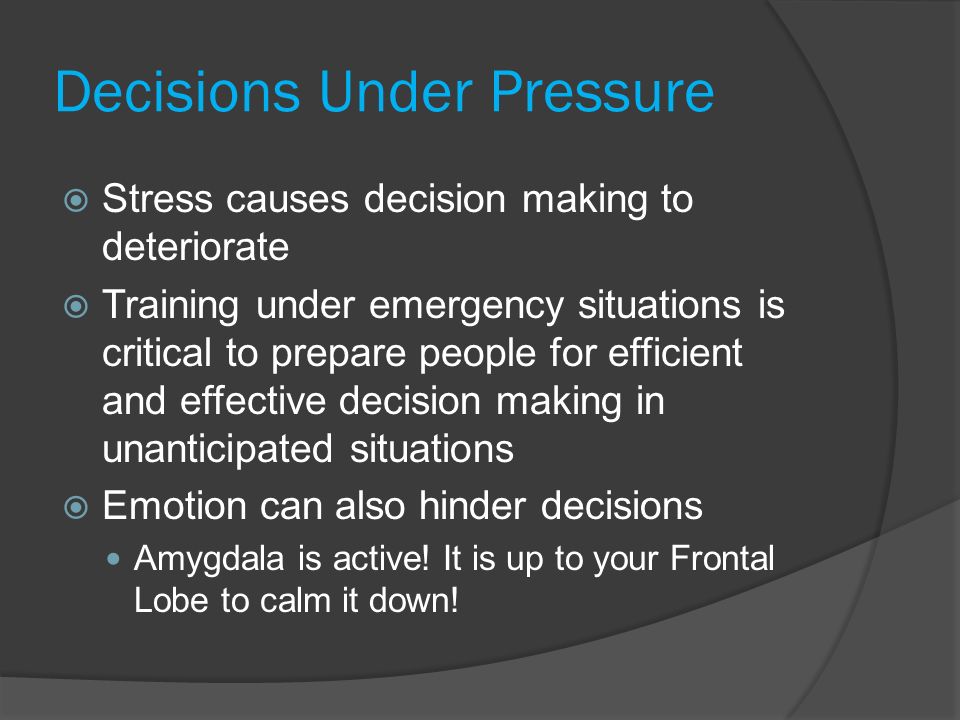By Koralia & Nicos Timotheou
As we saw in our previous newsletter, decision making is often accompanied by pressure and not infrequently by stress. It is therefore a stressful activity, like many other job-related tasks. In the business world, stress is the number one problem faced by executives, managers and employees.
Stress is the body’s adverse reaction to abnormal, unwanted circumstances. It is in general related with the inability of the individual to cope with a situation: the perceived loss of control.
Stress is a very personal experience. Its sources, levels and the ways it is manifested differ from person to person, even in seemingly identical situations.
While for some people responsibility and authority may increase stress exponentially, for others, working in an assembly line, being occupied with a repetitive task may actually be much more stressful.
This leads to the conclusion that it is not the job itself that induces stress to an individual but rather the person-environment fit.
However personal stress may be, it remains a universal occupational problem.
All over the world statistics are similar. An employee rate of approximately:
> 80%, believe their job is stressful;
> 40%, report their work as highly stressful;
> 25%, think their job is the number one stressor in their lives;
> 50%, feel stress due to job insecurity.
Stress is associated with an endless list of health problems including increased rates of heart attack, hypertension, back pain, fatigue, headaches, and digestion problems. These problems usually cause chronic health impairment which cannot always be corrected when the stressor is removed.
Stress is costly. It costs billions to state economies every year. It is counterproductive and leads to accidents, absenteeism, employee turnover, direct medical, legal and insurance costs and worker compensation. Indirectly, it costs through countless working hours being wasted by low productivity, dissatisfied and struggling personnel.
It is impossible to list all workplace stressors, but a few of the most recently encountered include:
- Workload (overload and underload)
- Pace, variety and meaningfulness of work
- Autonomy
- Working hours in absolute numbers and in variation (shift work)
- Mismatch of skills to the job requirements
- Lack of training
- Physical environment
- Interaction with others (supervisors, subordinates, peers, customers, public, conflicts, isolation)
- Role ambiguity
- Level of responsibility
- Low job satisfaction
- Unclear career path
- Job insecurity
- Corporate culture
- Work-life imbalance
It can be argued that a certain amount of stress is what motivates and drives people in life and at work. In this case, we should make a distinction by using the word “pressure” instead. Unlike stress, pressure does not necessarily have negative effects, as once it is lifted, there is no permanent damage left.
> There's a subtle relationship between pressure and performance. When managers experience the “right” amount of pressure, they are said to produce their best work. However, if there's too much or too little pressure, then performance can suffer. This relationship is explained by the diagram.

The shape of the curve will depend on the situation and the individual person and is affected by skill level, personality, trait anxiety and task complexity.
With experienced, determined employees, their self-discipline and sense of professionalism should help them avoid performance issues on the left hand side of the graph. Their training and experience will also help them on the right hand side of the graph, although there is a point at which even experienced professionals may become so overwhelmed that their work suffers.
So how can we – as managers- deal with work related stress?
> Job design is of utmost importance.
> To start with, one must balance RAEW: Responsibility, Authority, Expertise and Workload for every post. This will create reasonable and realistic job positions that have high success potential.
> It is then the manager’s role to ensure that each individual matches the job description and requirements. Some people have a large appetite for pressure and challenge while others perform well only within their comfort zone.
> So do revisit the conditions of each post.
> As part of the employee appraisal – or otherwise – reassess the situation:
- Have the demands been increased?
- Can the individual cope?
- If not, what added skills does he/she need in order to cope better?
- Can the work pressure be dissipated in another way or shared by others?
You won't be able to balance influences in all situations, so make sure that you know how to train your people so that they will be able to perform in most situations.

Do not hesitate to resort to specialist coaches for training your staff on how to handle and even exploit productively stress!
Ultimately, managing pressure and stress boils down to culture! Managing culture is the first duty of a leader!
You can nurture a “pressure welcoming” but “low stress” culture by:
- Treating all employees fairly;
- Valuing each individual;
- Designing balanced, clearly described jobs;
- Keeping job demands reasonable;
- Involving employees in decision-making;
- Providing workplace stress prevention programs that target the true source of stress;
- Investing on the right training, development and resources need by employees;
- Identifying stressful situations and stressed employees and acting proactively and respectfully;
- Showing zero tolerance to workplace bullying or any form of harassment;
- Providing support;
- Reassessing policies, programs, job descriptions, decisions made, in light of the stress they may induce.
Do remember:
People can experience pressure from other sources - their personal lives or any other underlying concerns! So this must be taken into account when assigning extra work or changing roles in the organization.
1.7.2016


